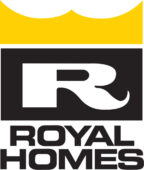You’ve survived your first summer as a cottage owner; now, it’s time to protect your cottage for the harsh winter months. Winterizing your cottage is a necessary task if you want to avoid costly repairs and renovations next spring.
Don’t wait until the first real day of winter to ensure your cottage is winter-ready! If you’re not sure where to start, ask yourself these three questions.
1. Complete or Partial Shutdown?
In a partial shutdown, the cottage remains heated and connected to the electrical grid during the winter months. A complete closure involves turning off the water, heat and electricity until spring.
Whether to leave the heat and electricity on over the winter is an age-old question for cottagers. There are strong arguments for both, but only one course of action may be right for you and your cottage.
The main reason to heat a vacant cottage is to avert the risk of structural damage. If the temperature dips below zero, any water inside the pipes can freeze; when that happens, the pipes can expand and burst under pressure. Freezing temperatures also create the risk of cracks to the cottage’s foundation if the basement is not well-insulated.
On the other hand, leaving the furnace on all winter can be expensive, especially if your cottage relies on an electric heating system. Space heaters consume more energy on average than all other appliances combined. Warming an empty cottage significantly increases its operating cost and carbon footprint.
Cottage owners who opt for a complete shutdown should take steps to minimize the chance of structural damage caused by burst pipes or freezing soil. The above-grade exterior foundation of the cottage should have a layer of continuous insulation along the length of the wall; the interior of the basement should also be insulated. When closing the cottage, the owner must shut the water to the cottage at the main valve, drain the faucets and water heater completely, and add RV antifreeze to the toilets.
2. Is Your Cottage Crime-Proof?
Many cottage owners only visit the cottage once or twice during the winter, if at all. This can, unfortunately, leave the property vulnerable to break-ins.
The good news is, there are measures you can take to protect your cottage from winter burglars:
- If you choose to leave the power on, install an electronic security alarm and surveillance cameras.
- Lock every potential access point to the cottage, including second-story windows. Don’t forget to lock out buildings like a shed or boathouse.
- Remove any valuables that could be stolen in the event of a burglary, especially irreplaceable items like art and jewellery.
Know people who live in the neighbourhood year-round? Ask them to stop by the cottage every so often to check for signs of burglary, like broken windows. That way, you can report the crime and fix the damage as soon as possible.
3. Are You Ready for Wind, Ice and Snow?
When you re-open the cottage next spring, step one will be to survey the cottage for signs of damage. The steps you take now can help ensure that no surprises are waiting for you later.
- Check for gaps around windows and doors that could allow cold air and moisture (not to mention vermin) to enter. Seal any gaps with foam strips or weather stripping.
- Clear fallen leaves and twigs from the gutters. Skipping this step increases the odds of an ice dam forming at the edge of the roof.
- Trim weak or broken branches that hang over the roof. Don’t wait for them to snap and fall under the weight of snow.
- Install protective shutters if your cottage does not have winter-ready storm windows. This step is not necessary with newly built cottages but may be a concern for older structures.
If you have asked yourself these questions and are taking the appropriate actions, you should be well on your way to protecting your cottage for the winter months. Once you have shut down your cottage, you can have peace of mind that your investment is protected and your re-opening will be stress-free and ready for your enjoyment in the warmer months.
